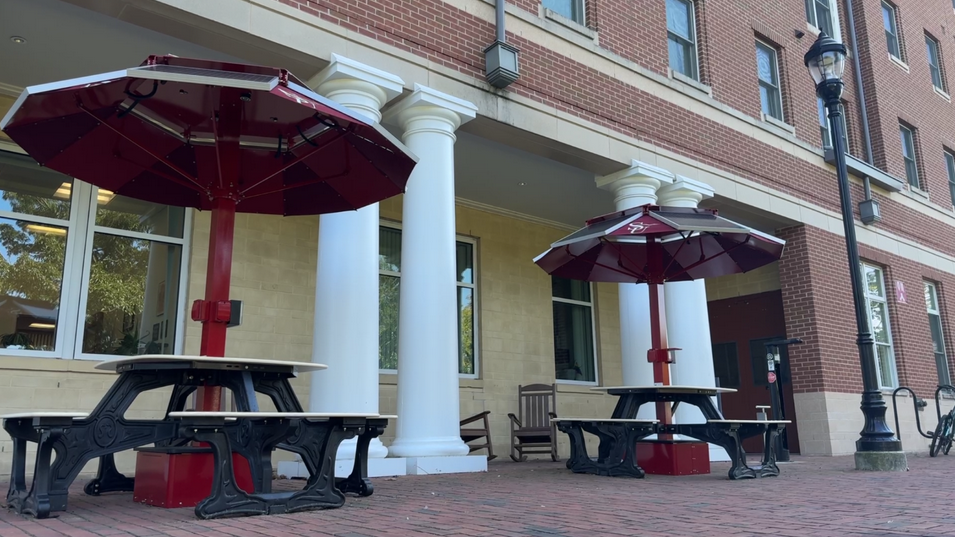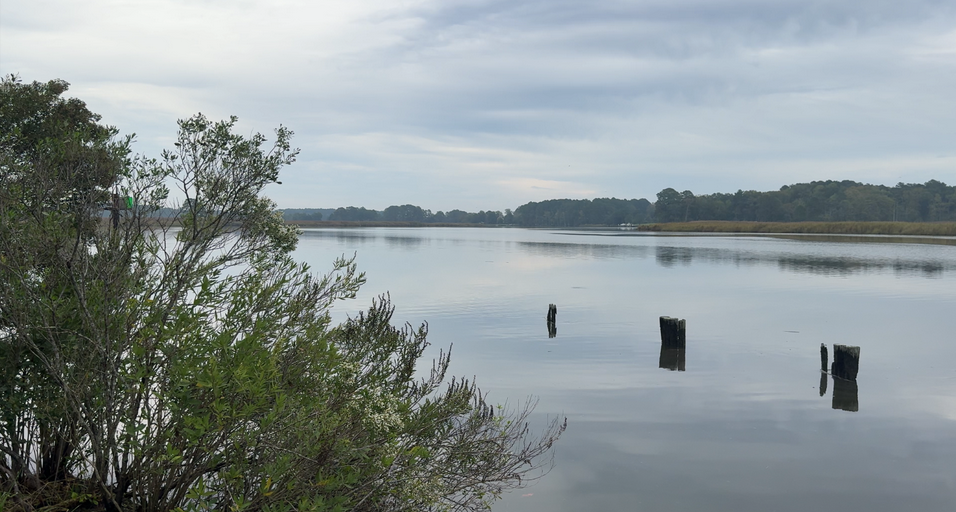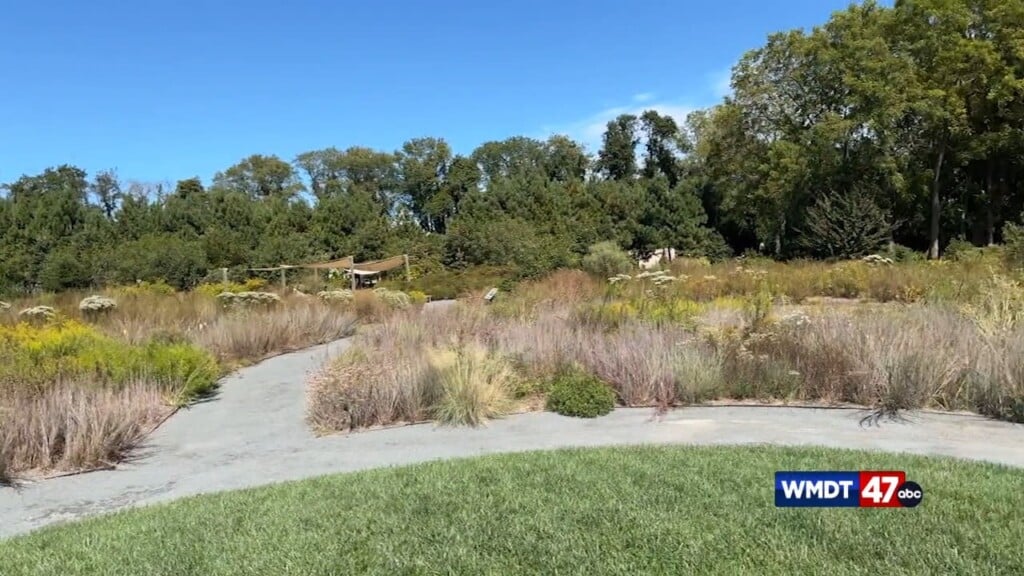Live Green: Lower Shore Land Trust Birding Brochure
SNOW HILL, Md. – The Lower Shore Land Trust has created a birding brochure as a way to help people learn about birds and get out in nature!
A couple of years ago, Beth Sheppard, Agricultural and Restoration Specialist, and Jared Parks, Director of Land Programs, wanted to highlight the undiscovered areas of the Eastern shore by creating a birding brochure for not only bird watchers, but anyone.
Sheppard says, “We thought it would make sense to give people a visual of where there might be places that are more handicapped accessible.”
Parks explains how they were able to create this birding brochure, “We were able to get a grant from Rural Maryland Council, RMC, to help us work on a project to highlight the benefits to the local economy, from activities such as bird watching.”
He also adds, “We partnered with a group that puts on the Delmarva Birding weekends with Jim Rap, and we worked on a program to get folks out on a few bird walks throughout the region, as well as make a few signs – the interpretive signs for a few of the local areas that you can go bird watching and the highlights that you can see at those areas.”
The brochure has twelve sites, four from each county: Worcester, Wicomico and Somerset. They also provide one sign in each county – one at Nanticoke Wildlife Management Area – One at Cypress Park and one at Irish Grove.
Sheppard explains, “We include on all the signs a QR code that brings you back to our web site and therefore, a lot of the resources that Jared’s mentioning are available for someone, as well as an interactive map of those sites. So, you can just plug it into your smartphone and tour away.”
Parks adds, “There’s so many wonderful spots here. The Maryland Department of Natural Resources has a fantastic website that you can go to to find public access sites throughout the state of Maryland, but there’s a lot of them down here on the lower shore. Also, the Maryland Ornithological Society, or MOS, also keeps a website with birding sites that they maintain throughout the state.”
The Nanticoke Wildlife Management Area, Parks says, is owned and operated by the Maryland Department of Natural Resources. He expresses, “It’s one of the better places on the shore, especially the lower shore for Northern Bob White Quail. One of the birds of conservation need, and this particular property is managed specifically for Bob Quail by the Maryland Department of Natural Resources.”
He adds, “The last sign that we’re putting up will be at Cypress Park in Pocomoke City along the trail that runs through the Cypress Forest along the Pocomoke River.”
The goal is to get people excited about birding and bring awareness to what the local ecosystem has to offer. Some of the birds at these sites that are highlighted are shorebirds, songbirds, forest birds, marsh birds and more.
Parks says, “We tried to pick a nice variety of habitats to put in there as well. So, if you wanted to come up with a birding tour for the day or the weekend, you can utilize this or in concert with the Maryland Department of Natural Resources and the Maryland Ornithological Society sites.”
This is also in an effort to boost local tourism. The brochure is completely free, and they’re hoping with all of the things associated with tourism, that can also be done for a lower impact tourism like birding photography, nature study, bird watching and more.
By bringing attention to the birding opportunities, the Lower Shore Land Trust highlights the various birds that are imperiled and how they are helping keep the populations up.
Parks explains, “A lot of our colonial nesting birds on the barrier islands and the coastal habitats within the coastal bays – things like Black Skimmer, Black Tern, the terns like Royal Tern, Common Tern, Caspian Tern – birds that nest on the beach when their beach is getting swamped is hard for them to be successful.”
He adds, “really our bigger problem here on the shore is the birds that utilize the secondary growth, the old field meadow habitats that used to be common here, like the Bob White Quail.”
Parks and Sheppard have been working with a number of partners to do a lot of projects within the coastal areas to support, to shore up the marshes and to increase the coverage of those islands in hopes of keeping the bird populations around more. Sheppard explains, “We spent a lot of time with grant projects trying to do more restoration work, bringing them more native habitat and meadows and trying to change behavior in terms of how areas are mowed or in those kind of practices, adding prescribed burns, those things and more. We educate the public about ways that we can all make a difference. It comes back around.”
With these birding brochures, they hope this will bring awareness to people about the birds, and not only will this have people get out more and enjoy nature, but Sheppard and Parks hope to also encourage people to do their part and help. The Lower Shore Land Trust hosts plant sales every spring and if people buy more native plants, they will attract local pollinators such as bees, butterflies and more, along with birds such as hummingbirds. Parks explains, “The more that you can plant native species in your yard, the better off things are going to be. Those are the host plants for the caterpillars and things that the birds eat, and so it helps feed the entire food web in your yard.” He adds, “we also encourage our rural landowners to do the same, have a few spaces. It doesn’t all need to be corn. It doesn’t all need to be Loblolly Pine forest plantations – diversity is the key.”
He points out that having invasive plants can drive away birds and other local pollinators, “Even if they creep somewhat slowly, like Wisteria over time, they’re really hard to remove from the landscape and they’re very damaging to the landscape.”
Some native plants that Parks and Sheppard encourage people to buy are Juneberry, which is also known as Serviceberry or Shadbush, instead of plants such as Bradford Pear. You can plant Redbuds, Coreopsis, Native Dogwoods other than the flowering Dogwood that provide a showy set of flowers. Native Dogwoods also have berries that birds love. The Lower Shore Land Trust has a garden by their office where they grow Milkweed for the butterflies, Echinacea, Coral Honeysuckle, which Sheppard says,”The hummingbirds love this species. This is not the same as Asian Honeysuckle, which is quite invasive.”
Adding native plants to your garden, and keeping away from harmful pesticides will help out bird populations. With the birding brochure, this can help people expand their minds on various bird species on the shore as well. Sheppard explains, ““if you start to listen and learn to recognize birdsong, then you can maybe take that home and say, ‘Oh my gosh, I want to increase habitat in my own backyard. I want to be able to have more birds in my local neighborhood’, and then that’s another way to expand this knowledge – take it home.”
Anyone from any age can go bird watching with the birding brochure. It can even be a family activity because the brochure includes small and large sites for families to go for twenty minutes to all day.
For more information visit their website


